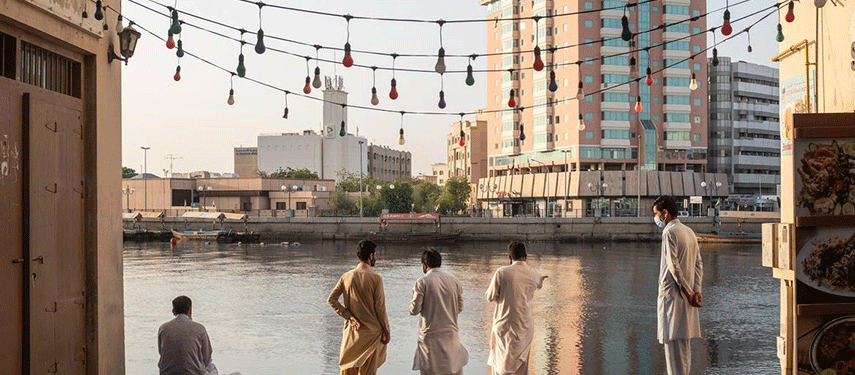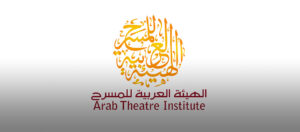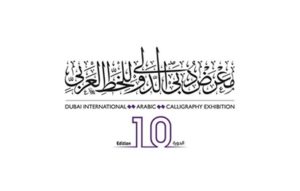How has creating art changed in the pandemic? It may be too early to ask this question, as we could only be in limbo before a second wave of coronavirus infections emerges. But five months in, Covid-19 has caused significant changes for artists.
Photographers were unable to go out and capture images because of movement restrictions, and are only now returning to discover new challenges. Artists whose work is a social practice, such as bringing people together for discussions and shared experiences, are learning to cope with new restrictions. And those with studios are learning to get by without feedback from other people.
The past five months have also been a journey – internal rather than cartographic. This emotional trajectory, though individually experienced, seems in retrospect to be a common feeling. Many recall an early feeling of frenzy, with the deluge of online cultural programming, as well as what Saudi Arabian artist Hadil Moufti calls the “banana bread time”, when the baked loaf became “symbolic of trying to make a home”. Now, the re-emergence of normal life comes with confusion around what “normal” means, after months of discovering a slower pace of life.
Over the past few weeks, The National has spoken to a number of UAE artists from various fields, to ask them what has changed in their work since the onset of the coronavirus crisis.
Nearly all bristled at the idea that having to stay at home should make them more productive. But all of them have kept making artworks, often revisiting old media such as painting or drawing, or finding subjects that are surprising, even to themselves.
Hadil Moufti
For many artists in the UAE, the coronavirus came in one distinct, calamitous form: the cancellation of Art Dubai and the events that surround it. As part of her first participation at the fair, Moufti was meant to show a new work in the Saudi Arabian art space Hafez Gallery’s booth: the large-scale Le Village de ma Mere. The drawn-and-pasted collage was made of the elements of a pendant that her father, a diplomat, gave her mother while they were living in Cameroon.
“I put all my mental strength and energy into the work,” she says. “It was really exciting, but also stressful, as I wanted to do my best. And then, Art Dubai was cancelled. The hardest thing was that the work was almost finished. I had to leave it at Tashkeel, and it’s waiting there for me. It’s covered in plastic and looks like a big ghost in my studio.”
A few months into the pandemic, Moufti began working again, responding to a subject that she had not yet broached: the death of her father. He died a decade ago, she says, during a time eerily similar to that of the coronavirus: when there was a temporary suspension of air travel caused by the eruption of the Eyjafjallajokull volcano in Iceland in April 2010. Moufti was in Jamaica then, and could not return to Madinah to lay him to rest.
Now she is making a series called Medina Minaret, of collages and drawings of a minaret at the Grand Mosque of Madinah, where her father is buried. For Resting, Heart Rate, part of the series, she traced the minaret in different scales, arranging the towers as if they are the spikes of an ECG heart-rate monitor. The minarets look almost fantastical, with bulges that evoke the contours of a body as much as the sterile spikes on a machine.
“It has been calming,” Moufti says. “It’s always so therapeutic working, with the repetition and the cutting, the gluing, the drawing of the same image. And I’m able to think about my dad in a positive way.”
Nadine Ghandour
Covid-19 restrictions have particularly weighed on artists whose work is not wholly studio-based. Nadine Ghandour, for example, an Egyptian artist who grew up in the UAE, is fascinated by a daily part of Gulf life: driving. In a series of small, attenuated Plasticine sculptures she made during the The Salama bint Hamdan Emerging Artists Fellowship programme in 2018, Ghandour captured what one sees while in a car, rendering the partial attention given to surroundings as a mix of surreal scales: the bank-like curve of a highway barrier; shadows of trees; lane dividers; advertisement hoardings rendered in miniature.
Since then, Ghandour has remained compelled by movement, collecting writings on aeronautics, flying objects and flight systems. But this interest hit a literal stumbling block when the pandemic confined her to her home. Eventually, she started drawing again, a practice she studied, but dropped, and making new sculptures, which she calls replicas, in Plasticine.
These reflected not movement, but the overlooked edges of her space – corners, skirting boards, or a brush she installed under the balcony door – or emphasised, in long, semi-gridded abstractions, its dimensions.
Ghandour says a major effect of the coronavirus has been the social isolation. “I miss being in the studio, where I might leave a replica of something out,” she says.
“Sometimes it would not work, but sometimes people would come to the studio and you would realise you got the replica right. Having social gatherings around your work was really nice, especially if you are not showing or exhibiting all the time. That has gone away.”
Talin Hazbar
Syrian architect and artist Talin Hazbar grew up in the UAE. She has been working on collaborative projects with labourers and fishermen in Sharjah, and found herself adapting to their schedule. She became attuned, like the fishermen, to the natural rhythm of the day.
“Even looking at the sunset and the sunrise is completely different now,” Hazbar says. “Fishing is all about these timings. They go out at sunrise, around 5am, and then after sunset there is a feeling that everything stops, and it’s more about cleaning for the next day. That is, if they are going out on the boat, and they might not go because of the waves or the weather.”
The fluctuating schedules of the fishermen reflect, she says, the uncertainty that accompanies life under a pandemic more generally.
“There is a realisation that we plan, but you cannot really plan,” Hazbar says. “And that is how I feel we are living now. As much as you want to plan, but it’s really more day to day.”
Mohamed Somji
For those whose work relies on leaving the studio, quarantine was felt more keenly. Dubai photographer Mohamed Somji captures images on commission as well as out in the field. He is well-known for his photographs of migrant workers in places such as Deira and Satwa, where he visits parks on a Friday when it is their day off. Somji’s photos have become testimonies to the experiences of people in Dubai and provide a more nuanced image of immigrant life in the city.
“People come together in a variety of ways for recreation, sport, cooking and cultural activities,” he says. “They forge connections with people from back home or make new relationships and friends.”
Now, visitors have returned to the parks, and Somji, too, is back photographing them. But he has encountered new challenges in a post-coronavirus environment.
“I remember getting some really nice photos, and they were people who were wearing their masks around their necks,” he says. “But I felt, this person might get in trouble, or people might look at that picture and say, oh look at this group of men, they are very reckless with not wearing masks. And that’s not the case.”
Somji says there are new responsibilities that come with shooting during the pandemic. Public anxiety around the spread of infection often translates into assumptions about which members of the Dubai community might not be following the rules, and he is keen to represent how seriously restrictions are being taken everywhere.
“What is also great is I don’t see the spirit of coming together being dampened,” he adds.” People are finding these ways to convene together, being safe, but still connecting.”
Tarek Al Ghoussein
For Palestinian photographer Tarek Al Ghoussein, the pandemic has brought his work almost to a standstill. For the past four years, he has been working on one project, Odysseus, in which he aims to photograph all 214 of Abu Dhabi’s islands. This year he had taken a sabbatical from teaching at NYUAD in order to finish it.
“I don’t want to complain,” Al Ghoussein says. “But it has not been good timing.”
Al Ghoussein has photographed about half of the islands so far, from uninhabited land masses to those that the Environment Agency Abu Dhabi and other ministries helped him get access to. For months, he was waiting for work to start again.
He is, however, no stranger to long-haul projects. From 2014 to 2017, Al Ghoussein photographed the sprawling Modernist complex Al Sawaber in Kuwait, which was built as social housing in the 1970s and was earmarked for demolition. (It has since been destroyed.) He photographed every apartment in the complex, showing the research-driven, even taxonomic underpinnings of his practice.
When we spoke in mid-July, he had just returned from his first shoot for Odysseus in five months. He had been to Al Alia Island, which has a handful of residences and is only accessible by boat. He took some images, with his camera and with a drone. I ask him how it felt to get back to work.
“Amazing,” he says.
www.thenational.ae




